#michael reinke
Text
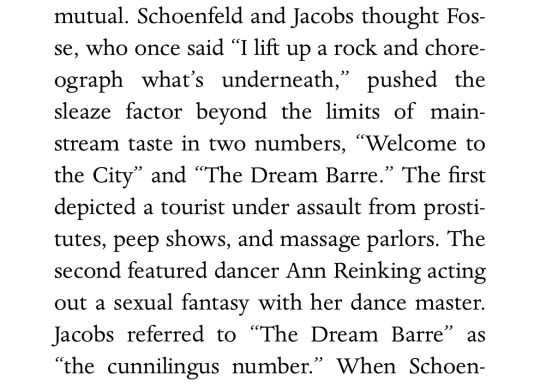
I am not making an ass out of myself alone. If I do the cunnilingus number, we all do the cunnilingus number
8 notes
·
View notes
Text

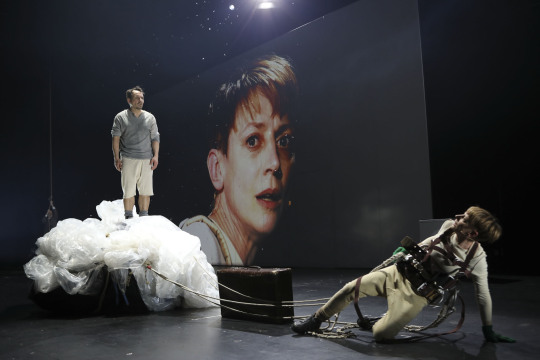
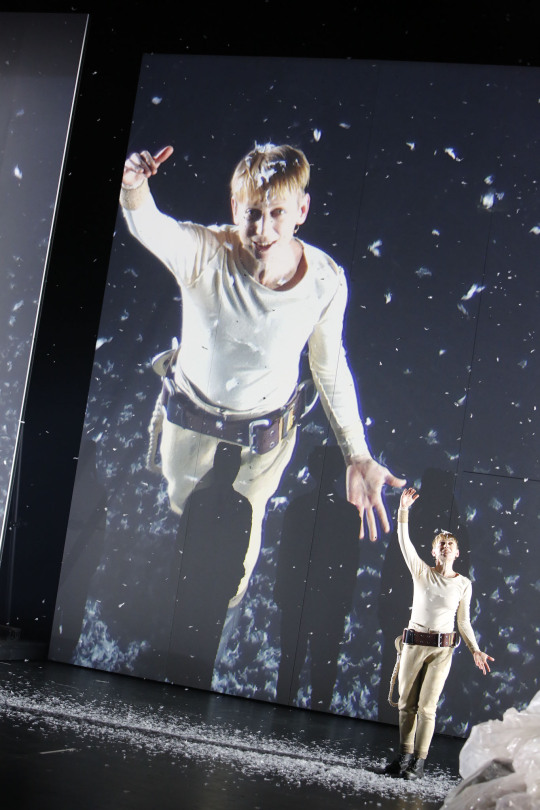
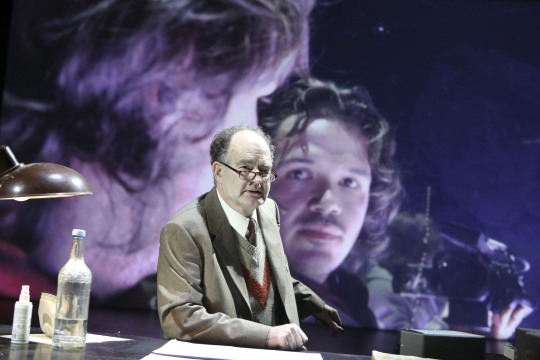
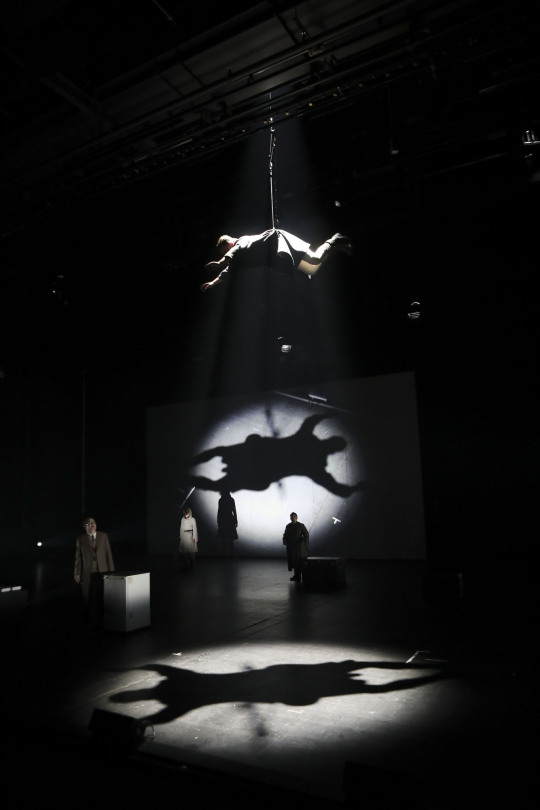
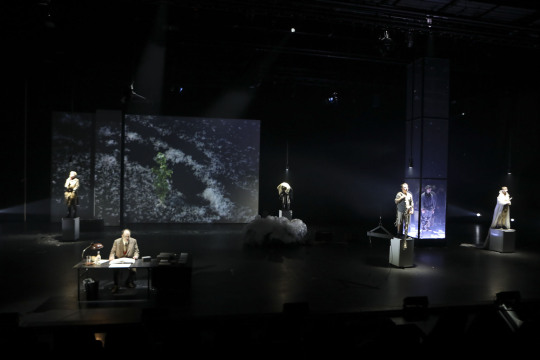


Athemschaukel
Schauspiel Köln
with
Martin Reinke, Katharina Schmalenberg, Stefko Hanushesko, Birgit Walter, Nikolaus Benda, Justus Maier
Director: Bastian Kraft
Staging Peter Baur
Costumes: Jemena Miletic
Dramaturgy: Sibylle Dudek
Music: Björn SC Deigner
Lightning: Michael Gööck
Video: Jonas Link
Live Camera: Jonathan Kastl
Premiere October 22 2021
pictures: Birgit Hubfeld
#Athemschaukel#Schauspiel Köln#Martin Reinke#Katharina Schmalenberg#Stefko Hanushesko#Birgit Walter#Nikolaus Benda#Justus Maier#Director: Bastian Kraft#Staging Peter Baur#Costumes: Jemena Miletic#Dramaturgy: Sibylle Dudek#Music: Björn SC Deigner#Lightning: Michael Gööck#Video: Jonas Link#Live Camera: Jonathan Kastl#Premiere October 22 2021#pictures: Birgit Hubfeld
0 notes
Text
Bebe Neuwirth in Caricature
I didn't plan it like this, but Bebe's caricature showcase just so happens to coincide on my schedule with Cabaret's opening night. So while she's glamming it up on the red carpet and readying for her soon-to-be-Tony-nominated performance, allow me to present beloved Diva Bebe Neuwirth in Caricature.

"Bebe Neuwirth," Sweet Charity, Published June 20, 1986 - Al Hirschfeld

"Cheers," Published December 11, 1990 - Al Hirschfeld
CHEERS: TED DANSON, KIRSTIE ALLEY, NICK COLASANTO, RHEA PERLMAN, GEORGE WENDT, JOHN RATZENBERGER, WOODY HARRELSON, BEBE NEUWIRTH, KELSEY GRAMMER, SHELLY LONG, AND ROGER REES, 1990

"Damn Yankees", Published February 27, 1994 - Al Hirschfeld
Pictured: Bebe Neuwirth with Victor Garber, Jerrod Emick, and George Abbott.

"Chicago," Published November 24, 1996 - Al Hirschfeld
Pictured: Joel Grey, Ann Reinking, Bebe Neuwirth, James Naughton

"Toasts Of The Town," Published June 1, 1997 - Al Hirschfeld
Pictured: Frank Langella, Julie Harris, Christopher Plummer, Brian Bradford, Michael Hayden, Bebe Neuwirth, Rebecca Luker, Fiona Shaw, Lillias White, David Morse, Angie Phillips, Donal McCann, Michael Gambon, David Rasche, Lia Williams, Janet McTeer, Anthony Sher, etc.
By 1986, Bebe had a Tony Award and a solo Hirschfeld drawing to her name, and by 1997, she had another Tony and three more Hirschfelds from both stage and screen work. Hirschfeld had a sprawling collection of art not limited just to Broadway. And of course, the feature Hirschfeld most prominently exaggerated (though not by much) were her award-winning gams.


Bebe Neuwirth for Sardis, 1997 | Unrelated: Bebe Neuwirth and Donna Murphy for the 2010 Drama League Nominations
Bebe's Sardis portrait is, of course, her in character as Velma Kelly in Chicago. The style of her caricature seemed to bridge the change between the old-school exaggeration and comic features that made the drawings so distinctive, and the blander, homogenous styles of today. Bebe's portrait came a few years before the true shift began, and frankly, she's better off for it.
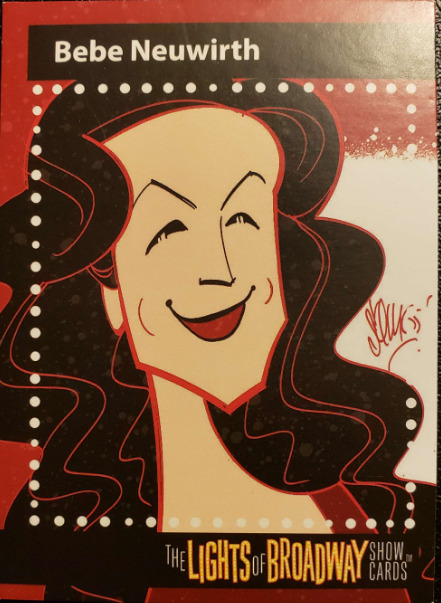

"Bebe Neuwirth," The Lights of Broadway, Autumn 2017 - Squigs
I've neglected to mention it so far, but each Squigs trading card comes equipped with a little "fun fact" section on the back. Most cards include a few biographical points, show credits, and a special "did you know?" With Bebe's return to Broadway this season, we can only hope we'll get another Squigs illustration to add to the list.
12 notes
·
View notes
Text
every now and then i remember how bebe has worked with michael bennett, bob fosse, peter gennaro, gwen verdon, ann reinking, etc., etc., etc. i go a little crazy
#AND we're on first name basis. so chill of us.#reading a chapter on a chorus line and it is filling me up with questions for her about her involvement with the show...#... neurotic scream
6 notes
·
View notes
Photo

Jessica Lange and Roy Scheider in All That Jazz (Bob Fosse, 1979)
Cast: Roy Scheider, Jessica Lange, Ann Reinking, Leland Palmer, Cliff Gorman, Ben Vereen, Erzsebet Foldi, Michael Tolan, Max Wright, William LeMessena, Irene Kane, Deborah Geffner, John Lithgow, Sandahl Bergman. Screenplay: Robert Alan Aurthur, Bob Fosse. Cinematography: Giuseppe Rotunno. Production design: Philip Rosenberg, Tony Walton. Film editing: Alan Heim. Music: Ralph Burns.
Bob Fosse's All That Jazz has a valedictory feeling to it, and not just because it's about a man foreseeing his own death, which strikingly foreshadows that of Fosse himself. It also feels like one of the last films of the 1970s, a decade associated with young hotshot American filmmakers who were determined to go their own way and to craft movies filled with a personal vision that didn't sugarcoat the material or pander and talk down to the audience. After them, the myth goes, came the deluge of movies made with a view to spawning sequels and franchises. That summary is oversimple, of course, but perhaps it does illuminate why a film like All That Jazz continues to fascinate viewers, despite its inherent messiness and occasional excessive self-indulgence. It's held together by Fosse's abundant mad energy and by a cunning, committed performance by Roy Scheider as the driven, workaholic, self-destructive Joe Gideon, whom no one would deny is a warts-and-all self-portrait by Fosse. All That Jazz is usually classified as a musical, because of its elaborate production numbers, but it fits the genre only loosely. It's a bit like 42nd Street (Lloyd Bacon, 1933) in that it's a "backstage musical" with a serious undercurrent, although the undercurrent becomes a torrent in All That Jazz, and the music becomes an ironic counterpoint to the sardonic drama of the life and death of Joe Gideon.
2 notes
·
View notes
Text
The Down Jones is Down Again As Pelosi Arrives in Taiwan
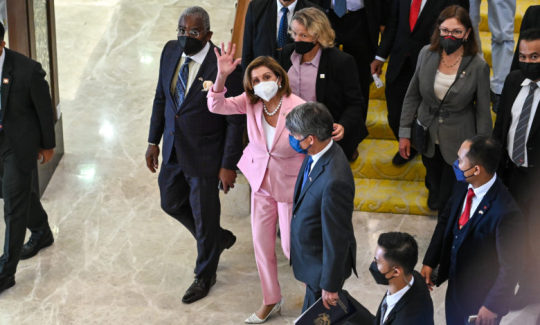
The stock market was mixed Tuesday as markets monitor House Speaker Nancy Pelosi’s trip to Taiwan.
In midday trading, the Dow Jones Industrial Average had fallen 219 points, or 0.7%, while the S&P 500 had dropped 0.1%, and the Nasdaq Composite had risen 0.4%. All three indexes were down earlier in the trading session.
Pelosi landed on Tuesday in Taiwan, a move that potentially raises tensions between the U.S. and China. That makes the stock market nervous, as trade relations between the two largest economies broke down under President Trump.
“There was some concern …as Nancy Pelosi was making her way to Taiwan,” wrote Michael Reinking, senior market strategist at New York Stock Exchange. Initially, “This weighed on global markets.”
Also, Mary Daly, the president of the San Francisco Fed, said that the central bank is nowhere near finished fighting inflation and that the Fed is likely to raise rates and keep them high for a while.
Get Bloomberg and WSJ Digital Subscription 5 Years
That sentiment is a reversal from what had sent the stock market upward recently.
The S&P 500 had gained 13% from its intraday low of the year hit in mid-June through Monday’s close, as markets bet that the Federal Reserve will slow down the pace of its interest rate hikes as signs emerged that inflation has peaked.
This week, the stock market had already been growing cautious about the Fed—and higher stock prices—ahead of key economic data. If Friday’s July jobs report shows more jobs added than expected and if next week’s consumer price index report shows higher-than-expected inflation, markets will once again expect the Fed to become more hawkish. That would send stocks tumbling.
Now, the market is hitting a point where it has had trouble surpassing recently. With the S&P 500 trading at just over 4100, sellers have come in to knock the indexes down several times since the end of May. Strategists at Credit Suisse note that, should the index rally up to 4200, heavy resistance—or selling pressure—should kick in at that level.
“Chasing the market here is tougher,” wrote Dennis DeBusschere, founder of 22V Research. “Expect consolidation.”
That is because “the market is too aggressively pricing in rate cuts next year,” wrote Lauren Goodwin, economist and portfolio strategist at New York Life Investments.
Here are some stocks on the move Tuesday:
BP gained 1.9% as the group became the latest oil giant to report its best quarter in years amid soaring energy prices. BP saw adjusted profit surge to $8.5 billion in the prior quarter, up from $2.8 billion in the year prior and well ahead of analysts’ expectations.
Taiwan Semiconductor Manufacturing Co. (TSM) rose 0.4% after a 2.5% tumble Monday, as shares in the world’s largest chip maker weakened ahead of Pelosi’s visit to Taiwan.
DuPont de Nemours (DD) slipped 1.6%, even after the materials science giant reported second-quarter adjusted profit per share of 88 cents from $3.3 billion in sales, outpacing Wall Street’s expectations of 75 cents in per-share profit from revenue of $3.25 billion.
Caterpillar (CAT) stock dropped 4.9% after the company reported a profit of $3.18 a share, beating estimates of $3.03 a share, on sales of $14.2 billion, above expectations of $14 billion.
Pinterest (PINS) stock gained 12% after the company reported a profit of 11 cents a share, missing estimates of 18 cents a share, on sales of $665.9 million, above expectations for $664.7 million.
Read the full article
0 notes
Text
Inventory Market At the moment (6/29/22): Markets Regular, However Mattress Bathtub, Cruise Traces Tumble – Kiplinger’s Private Finance
Inventory Market At the moment (6/29/22): Markets Regular, However Mattress Bathtub, Cruise Traces Tumble – Kiplinger’s Private Finance
A sluggish macroeconomic information day resulted in one of many lowest-volume classes of 2022, although a number of particular person equities endured greater than their fair proportion of volatility.
The S&P 500, which completed with a small achieve Wednesday, posted the index’s smallest intraday vary for the 12 months, based on Michael Reinking, senior market strategist for the New York…
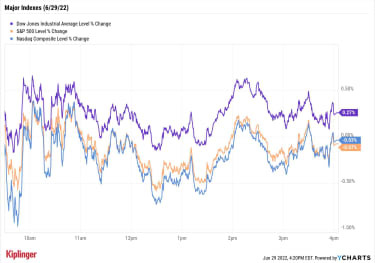
View On WordPress
#binance#bitcoin#blockchain#btc#coinbase#crypto#cryptocurrency#defi#dogecoin#earn#ethereum#feg#fegtoken#mining#nft#stockmarket
0 notes
Photo


Michael Reinke + Michael Krogmann = MICHA BRO'S ✊
#fanart#portrait#painting#rbtv#rocketbeans#micha bro's#micha#Michael reinke#Michael Krogmann#krogi#nicenstein#manowar#maximale realität#angel#devil
2 notes
·
View notes
Photo
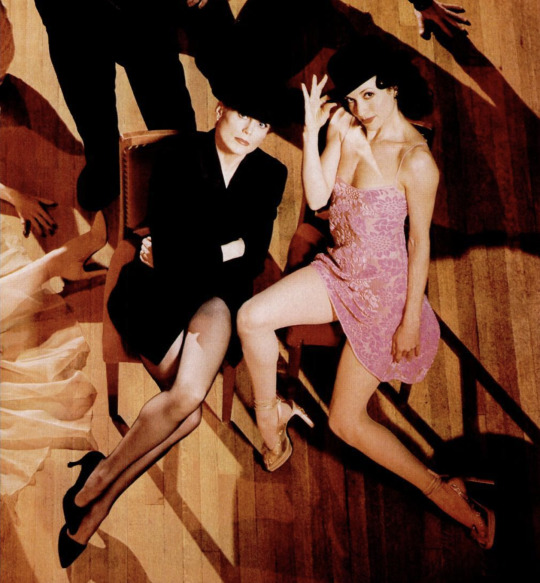
Ann Reinking and Bebe Neuwirth photographed by Michael O’Neill for New York Magazine, February 1997.
#totally heterosexual poses to make with your bestie#ann reinking#chicago#michael o'neill#1997#1990s#edit:bebeneuwirth#edit:annreinking#*#`#bebe neuwirth#bn
105 notes
·
View notes
Photo
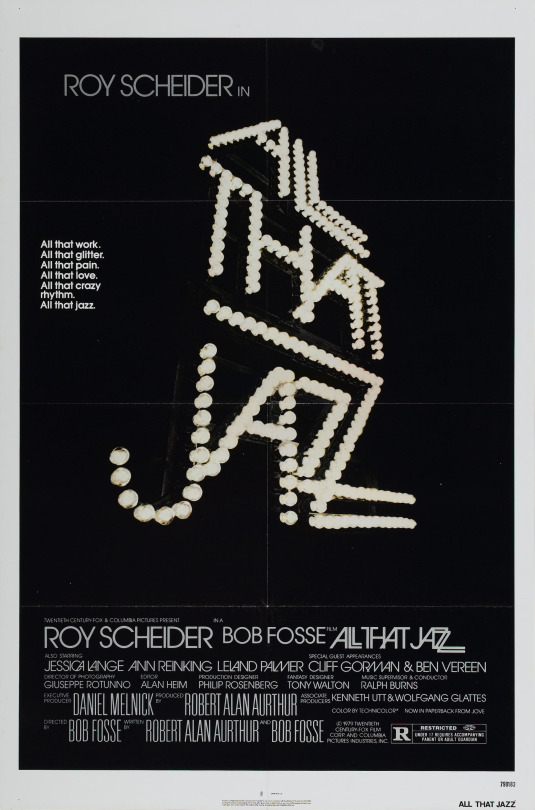
#All That Jazz#Bob Fosse#Roy Scheider#Jessica Lange#Ann Reinking#Leland Palmer#Cliff Gorman#Ben Vereen#Erzsebet Foldi#Michael Tolan#Max Wright#William LeMassena#Irene Kane#Deborah Geffner#John Lithgow
18 notes
·
View notes
Photo

Bad movie I have All that Jazz 1979
#All that Jazz#Columbia Pictures Corporation#Roy Scheider#Jessica Lange#Leland Palmer#Ann Reinking#Cliff Gorman#Ben Vereen#Erzsebet Foldi#Michael Tolan#Max Wright#William LeMassena#Irene Kane#Deborah Geffner#Kathryn Doby#Anthony Holland#Robert Hitt
8 notes
·
View notes
Photo

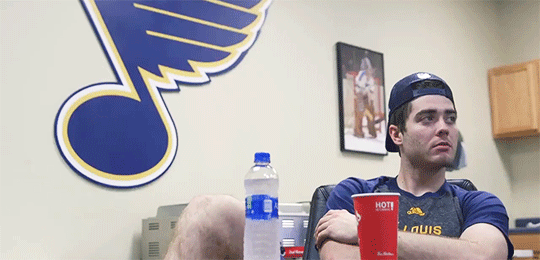
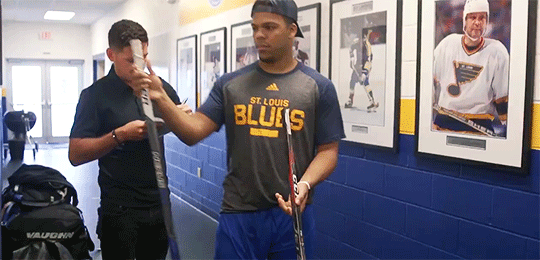

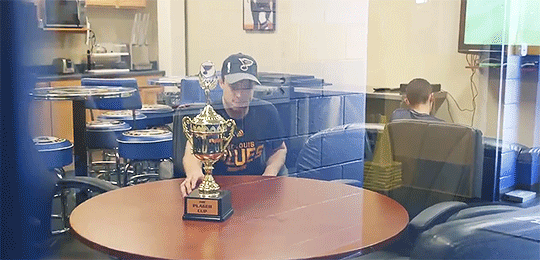
the office: blues dev camp edition
#BIG MICHAEL SCOTT FAN.#nolan stevens#erik foley#st louis blues#alexey toropchenko#mitch reinke#this video kILLED ME#i like dwight...heh heh heh#please dont mind the qualityyyy twitter is so shit#thanks blues for making a whole video bc nolan said he liked this show......#mygifs#hockey
37 notes
·
View notes
Text
The intake of breath in 2002 when Martine McCutcheon won the Olivier for best actress for her Eliza in My Fair Lady was both sharp and extraordinarily audible. Her susceptibility to a virus that persistently felled her vocally meant she’d missed countless performances. When she accepted the award, according to a report at the time, one person yelled: “Why didn’t you send an understudy?”
Very happily, none of the winners at this year’s Oliviers elicited anything remotely like that response. Of course, anyone rooting for a favourite who went home empty-handed will have disagreed with decisions but there was no moment when the Royal Albert Hall greeted an announcement with an audible: “What the…?”
I say this because such things have happened and McCutcheon’s was far from the worst case. Arguably, the most egregious one was in 1998 around the revival of Chicago.
Quite rightly, best theatre choreographer nominees included Ann Reinking, whose work, alongside that of director Walter Bobbie, defined and determined the production. She was up against Rob Marshall for a sparky revival of the Faust-legend-meets-baseball musical Damn Yankees and Matt West for Disney’s Beauty and the Beast. I was there, seated next to Chicago’s joint leading lady Ute Lemper, and you can imagine the look crossing her face when the announcement came that the winner for best theatre choreographer was… Simon McBurney for The Caucasian Chalk Circle.
Okay, you probably missed McBurney’s show – it was 24 years ago – but take it from me: no one came out of that Complicité and National Theatre production of Brecht desperately seeking tap shoes, leotards and dance classes – or even thinking they’d seen anything approaching choreography. Staged in the round, it featured some effective movement ideas – the end.
What it felt like was that the production warranted Olivier love and this, bizarrely, was the category deemed worthy, although McBurney’s direction hadn’t earned him a best director nomination. While I have no intention of snubbing McBurney, it was a strong instance of a persistent Olivier problem of ‘eligibility’ and ‘category crime’ and on Sunday night, through no fault of the nominees, it was once again rampant.
I have nothing but praise for Simon Hale winning best original score or new orchestrations for Get Up, Stand Up!, but as I pointed out in last week’s runners-and-riders breakdown, this nonsensical category gave voters an impossible choice between his reworking of beloved recordings; new orchestrations of forgotten Cole Porter numbers (Anything Goes); a score of new songs alongside screen hits (Back to the Future); and a soundscape for a play without songs (Life of Pi). It was like comparing lampshades and ski-instructors.
As well as insulting all the nominees – ‘oh, musicians’ jobs are all the same’ – it prompts three immediate questions: who decided on this clumping together of absurdly dissimilar nominations, how, and why?
And then there’s best revival. I absolutely loved Michael Longhurst’s Constellations and loudly cheered the two of its four groundbreaking casts that I saw. His casting idea was a stroke of brilliance but, as the programme itself clearly stated, this wasn’t a revival, it was just another outing of the 2012 Royal Court production.
The other nominees – Macbeth at the Almeida, The Normal Heart at the National Theatre and A Number at the Old Vic – took plays and completely reimagined, reworked and freshly staged them. Constellations was a recast.
It was not dissimilar to 2020 when dream team Matthew Bourne and Stephen Mear romped home with the Olivier for their revamped choreography for Mary Poppins – even though they’d already won for the same show in 2005 when it first appeared.
And then there’s the voting. The opera, dance and affiliate theatre awards are judged separately by panels of experts. That’s great and how all the awards used to be chosen. But now, despite the presentational blurb bigging up a nine-member judging panel, it’s almost exclusively Society of London Theatre members nominating and choosing their own winners – routinely favouring shows still running – and sidelining the panel.
Since these theatre owners and producers pay for the awards, it makes internal sense, but they need to come clean. Transparent and independent they are not.
Sunday night proved SOLT can make fine choices. But the Oliviers are not the so-called ‘best of British theatre’. They’re simply the favoured work from London theatres on SOLT contracts. Unsexy, but true. Other great work is ineligible.
Currently, the whole shebang is misleading. The system needs a shake-up. With Julian Bird, SOLT’s chief executive and producer of the Oliviers, moving on, now is the time.
8 notes
·
View notes
Text

Fictionz, a female-centric narrative podcast subscription app, is launching in mid-October with dramas featuring Judy Greer (Halloween Kills) as a manic Hollywood agent, Jeanine Mason (Roswell: New Mexico), Max Greenfield (The Neighborhood), and Michael Trevino (Roswell: New Mexico).
Also voicing content are Meghan Reinks (The Honor List), Bahni Turpin (The Help), Sierra Swartz (Cheaper by the Dozen), Kylie Sparks (Squaresville), Adam J. Harrington (Bosch), and musicians Kori Withers, Soufia Toufa, and Chester See (Rock of Ages).
Run by former Untitled Entertainment and Relativity Media exec Kendall Rhodes of Paraluman Media and finance partner Greg Lawrance of Ready Go Ventures, the company is adapting short stories and originals into narrative audio stories that put diverse female protagonists at the forefront. The dramas are predominantly written by female authors and directed by women.
Releasing a new series every two weeks, the first seasons of each series will run between three to seven episodes and anywhere from five to 12 minutes per episode. All content will be available on the Fictionz platform.
The initial October launch includes four series: So, You Want to Be a Honeypot? by sci-fi author Kelly Robson (A Human Stain), Farrina by Brazilian writer Cidinha da Silva (Sobre-viventes!), and Don’t Feed the Bums by Lisa Brackmann (Getaway). It also includes a Fictionz Original, The Break Up Diet, a comedy series written and directed by Meredith Littas (Escape) and executive-produced by David DeSantos (Animal Kingdom) of Cottonwood Production. The Break Up Diet tells a relatable Covid-era story and stars Greer.
Mason will portray a Millennial version of Else in a modern retelling of feminist classic The Yellow Wallpaper.
“Collaborating with the Fictionz team on The Breakup Diet, one of the initial launch series, has been an exciting adventure. Bringing Meredith Littas’ brilliant and timely script to life through audio recording and then direct to audiences through the new platform, is providing listeners with a new way of listening to content, unlike other podcasts,” said Archer and Ant-Man star Greer.
“The Yellow Wallpaper is one of my favorite short stories and I loved working with TonyV and Cottonwood to retell this as a horror audio series for Fictionz,” added Mason.
“We started Fictionz as a fresh new audio platform that puts female voices and diverse stories at the forefront,” explained Kendall Rhodes, Fictionz co-founder.
“From the outset, we are committed to delivering great short stories with the option to expand them into more seasons with new writers and directors. Working closely with these creatives, Fictionz invests in the underlying intellectual property and engages with writers on adaptation into audio stories. There are an exuberant number of fascinating stories that are ready to be turned into entertaining audio content for listeners on the go, and Fictionz was created as the app to make them easily available and ad-free to our target audience.”
20 notes
·
View notes
Text
Chicago at Long Beach, LA, 1992: A Story of Bebe Neuwirth, Choreography, Riots, Revivals, and Relevance
Recently and rather excitingly, more footage made its way to YouTube of the 1992 version of Chicago staged at Long Beach in LA, featuring Bebe Neuwirth as Velma and Juliet Prowse as Roxie.
Given its increased accessibility and visibility, this foregrounds the chance to talk about the show, explore some of its details, and look at the part it might have played as a contribution to the main ‘revival’ of Chicago in 1996 – which has given the show one of the most resonant and highly enduring legacies seen within the theatre ever.

This Civic Light Opera production at Long Beach was staged in 1992, four years before the ‘main’ revival made its appearance at Encores! or had its subsequent Broadway transfer, and it marked the first time a major revival of Chicago had been seen since the original 1975 show disappeared nearly 15 years previously.
This event is of particular significance given its position as the first step in the chain of events that make up part of this ‘new Chicago’ narrative and the resultant entire multiple-decade spanning impact of the show hereafter.
But for all of its pivotal status, it’s seldom discussed or remembered anywhere near as much as it should be.
This may be in part because of how little video or photographic record has remained in easily accessible form to date, and also because it only played for around two weeks in the first place. As such, it is a real treat on these occasions to get to see such incredible and unique material that would otherwise have been lost forever after such a brief existence some 30 years ago.
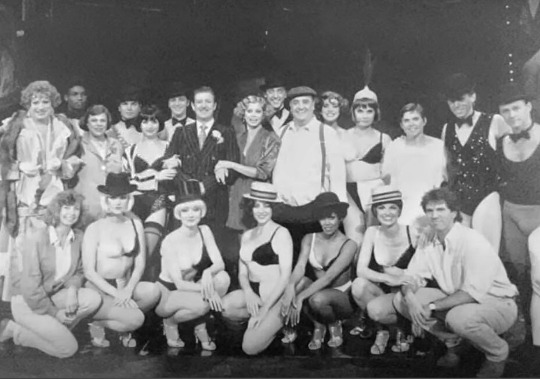
This earlier revival of the show still feels like what we have come to identify “Chicago” as in modern comprehension of the musical, most principally because the choreography was also done by Ann Reinking. As with the 1996 production, this meant dance was done “very much in the master’s style” – or Mr Bob Fosse.
The link below is time-stamped to Bebe and Juliet performing ‘Hot Honey Rag’. As one of the most infamous numbers in Broadway history, it’s undoubtedly a dance that has been watched many times over. But never before have I seen it done quite like this.
https://youtu.be/4HKkwtRE-II?t=2647
‘Hot Honey Rag’ was in fact formerly called ‘Keep It Hot’, and was devised by Fosse as “a compendium of all the steps he learned as a young man working in vaudeville and burlesque—the Shim Sham, the Black Bottom, the Joe Frisco, ‘snake hips,’ and cooch dancing”, making it into the “ultimate vaudeville dance act” for the ultimate finale number.
Ann would say about her choreographical style in relation to Fosse, “The parts where I really deviate is in adding this fugue quality to the numbers. For better or worse, my style is more complicated.” The ‘complexity’ and distinctness she speaks of is certainly evident in some of the sections of this particular dance. There are seemingly about double the periodicity of taps in Bebe and Juliet’s Susie Q sequence alone. One simply has to watch in marvel not just at the impressive synchronicity and in-tandem forward motion, but now also at the impossibly fast feet. Other portions that notably differ from more familiar versions of the dance and thus catch the eye are the big-to-small motion contrast after the rising ‘snake hips’ section, and all of the successive goofy but impeccably precise snapshot sequence of arm movements and poses.
More focus is required on the differences and similarities of this 1992 production compared against the original or subsequent revival, given its status and importance as a bridging link between the two.
The costumes in 1975 were designed by Patricia Zipprodt (as referenced in my previous post on costume design), notably earning her a Tony Award nomination. In this 1992 production, some costumes were “duplications” of Zipprodt’s originals, and some new designs by Garland Riddle – who added a “saucy/sassy array” in the “typical Fosse dance lingerie” style. It is here we begin to see some of the more dark, slinkiness that has become so synonymous with “Chicago” as a concept in public perception.
The sets from the original were designed by Tony Walton – again, nominated for a Tony – and were reused with completeness here. This is important as it shows some of the original dance concepts in their original contexts, given that portions of the initial choreography were “inextricably linked to the original set designs.” This sentiment is evident in the final portion of ‘Cell Block Tango’, pictured and linked at the following time-stamp below, which employs the use of mobile frame-like, ladder structures as a scaffold for surrounding movements, and also a metaphor for the presence of jail cell bars.
https://youtu.be/4HKkwtRE-II?t=741

Defining exactly how much of the initial choreography was carried across is an ephemeral line. Numbers were deemed “virtually intact” in the main review published during the show’s run from the LA Times – or even further, “clones” of the originals. It is thought that the majority of numbers here exhibit greater similarity to the 1975 production than the 1996 revival, except for ‘Hot Honey Rag’ which is regarded as reasonably re-choreographed. But even so, comparing against remaining visible footage of Gwen Verdon and Chita Rivera from the original, or indeed alternatively against Bebe and Annie later in the revival, does not present an exact match to either.
This speaks to the adaptability and amorphousness of Fosse-dance within its broader lexicon. Fosse steps are part of a language that can be spoken with subtle variations in dialect. Even the same steps can appear slightly different when being used in differing contexts, by differing performers, in differing time periods.
It also speaks to some of the main conventions of musical theatre itself. Two main principles of the genre include its capacity for fluidity and its ability for the ‘same material’ to change and evolve over time; as well as the fact comparisons and comprehensions of shows across more permanent time spans are restricted by the availability of digital recordings of matter that is primarily intended to be singular and live.
Which versions of the same song do you want to look at when seeking comparisons?
Are you considering ‘Hot Honey Rag’ at a performance on the large stage at Radio City Music Hall at the Tony Awards in 1997? Or on a small stage for TV shows, like the Howard Cosell or Mike Douglas shows in 1975? Or on press reel footage from 1996 on the ‘normal’ stage context in a format that should be as close to a replica as possible of what was performed in person every night?
Bebe often remarks on and marvels at Ann’s capacity to travel across a stage. “If you want to know how to travel, follow Annie,” she says. This exhibits how one feature of a performance can be so salient and notable on its own, and yet so precariously dependent on the external features its constrained to – like scale.
Thus context can have a significant impact on how numbers are ultimately performed for these taped recordings and their subsequent impact on memory. Choreography must adjust accordingly – while still remaining within the same framework of the intention for the primary live performances.
This links to Ann’s own choreographical aptitude, in the amount of times it is referenced how she subtly adapted each new version of Chicago to tailor to individual performers’ specific merits and strengths as dancers.
Ann’s impact in shaping the indefinable definability of how Chicago is viewed, loved and remembered now is not to be understated.
An extensive 1998 profile – entitled “Chicago: Ann Reinking’s musical” – explores in part some of Ann’s approaches to creating and interacting with the material across a long time span more comprehensively. Speaking specifically to how she choreographed this 1992 production in isolation, Ann would say, “I knew that Bob’s point of view had to permeate the show, you couldn’t do it without honoring his style.” In an age without digital history at one’s fingertips, “I couldn’t remember the whole show. So I choreographed off the cuff and did my own thing. So you could say it was my take on his thoughts.” Using the same Fosse vocabulary, then – “it’s different. But it’s not different.”
One further facet that was directly carried across from the initial production were original cast members, like Barney Martin as returning as Amos, and Michael O'Haughey reprising his performance as Mary Sunshine. Kaye Ballard as Mama Morton and Gary Sandy as Billy Flynn joined Bebe and Juliet to make up the six principals in this new iteration of the show.
Bebe, Gary and Juliet can be seen below in a staged photo for the production at the theatre.

The venue responsible for staging this Civic Light Opera production was the Terrace Theatre in Long Beach in Los Angeles. Now defunct, this theatre and group in its 47 years of operation was credited as providing some of “the area’s most high profile classics”. Indeed, in roughly its final 10 years alone, it staged shows such as Hello Dolly!, Carousel, Wonderful Town (with Donna McKechnie), Gypsy, Sunday in the Park with George, La Cage aux Folles, Follies, 1776, Funny Girl, Bye Bye Birdie, Pal Joey, and Company. The production of Pal Joey saw a return appearance from Elaine Stritch, reprising her earlier performance as Melba Snyder with the memorable song ‘Zip’. This she had done notably some 40 years earlier in the original 1952 Broadway revival, while infamously and simultaneously signed as Ethel Merman’s understudy in Call Me Madam as she documented in Elaine Stritch at Liberty.
Juliet Prowse appeared as Phyllis in Follies in 1990, and Ann Reinking acted alongside Tommy Tune in Bye Bye Birdie in 1991, in successive preceding seasons before this Chicago was staged.
But for all of its commendable history, the theatre went out of business in 1996 just 4 years after this, citing bankruptcy. Competition provided in the local area by Andrew Lloyd Webber and his influx of staging’s of his British musicals was referenced as a contributing factor to the theatre group’s demise. This feat I suspect Bebe would have lamented or expressed remorse for, given some of her comments in previous years on Sir Lloyd Webber and the infiltration of shows from across the pond: “I had lost faith in Broadway because of what I call the scourge of the British musicals. They've dehumanized the stage [and] distanced the audience from the performers. I think 'Cats' is like Patient Zero of this dehumanization.”
That I recently learned that Cats itself can be rationalised in part as simply A Chorus Line with ears and tails I fear would not improve this assessment. In the late ‘70s when Mr Webber noticed an increase of dance ability across the general standard of British theatre performers, after elevated training and competition in response to A Chorus Line transferring to the West End, he wanted to find a way he could use this to an advantage in a format that was reliable to work. Thus another similarly individual, sequential and concept-not-plot driven dance musical was born. Albeit with slightly more drastic lycra leotards and makeup.
But back in America, the Terrace theatre could not be saved by even the higher incidence of stars and bigger Broadway names it was seeing in its final years, with these aforementioned examples such as Bebe, Annie, Tommy, Juliet, Donna, or Elaine. The possibility of these appearances in the first place were in part attributable to the man newly in charge as the company’s producer and artistic director – Barry Brown, Tony award-winning Broadway producer.
Barry is linked to Bebe’s own involvement with this production of Chicago, through his relationship – in her words – as “a friend of mine”.
At the time, Bebe was in LA filming Cheers, when she called Barry from her dressing room. Having been working in TV for a number of years, she would cite her keenness to find a return to the theatre, “[wanting] to be on a stage so badly” again. The theatre is the place she has long felt the most sense of ease in and belonging for, frequently referring to herself jokingly as a “theatre-rat” or remarking that it is by far the stage that is the “medium in which I am most comfortable, most at home, and I think I'm the best at.”
Wanting to be back in that world so intensely, she initially proposed the notion of just coming along to the production to learn the parts and be an understudy. Her desire to simply learn the choreography alone was so strong she would say, “You don’t have to pay me or anything!”
She’d had the impetus to make the call to Barry in the first place only after visiting Chita Rivera at her show in LA with a friend, David Gibson. At the time, the two did not know each other that well. Bebe had by this point not even had the direct interaction of taking over in succession for Chita in Kiss of the Spider Woman in London. This she would do the following year, with Chita guiding her generously through the intricacies of the Shaftesbury Theatre and the small, but invaluable, details known only to Chita that would be essential help in meeting stage cues and playing Aurora.
Bebe had already, however, stepped into Chita’s shoes multiple times, as Anita in West Side Story as part of a European tour in the late ‘70s, or again in a Cleveland Opera Production in 1988; and additionally as Nickie in the 1986 Broadway revival of Sweet Charity – both of which were roles Chita had originated on stage or screen. In total, Velma would bring the tally of roles that Bebe and Chita have shared through the years to four, amongst many years also of shared performance memories and friendship.
They may not have had a long history of personal rather than situational connections yet when Bebe visited her backstage at the end of 1991, but Chita still managed to play a notable part in the start of the first of Bebe’s many engagements with Chicago.
After Bebe hesitantly relayed her idea, Chita told her, “You should call! Just call!”
So call Bebe did. One should listen to Chita Rivera, after all.
Barry Brown rang her back 10 minutes later after suggesting the idea to Ann Reinking, who was otherwise intended to be playing Velma. The response was affirmative. “Oh let her play the part!”, Annie had exclaimed. And so begun Bebe’s, rather long and very important, journey with Chicago.
In 1992, this first step along the road to the ‘new Chicago’ was well received.
Ann Reinking with her choreography was making her first return to the Fosse universe since her turn in the 1986 Sweet Charity revival. Diametrically, Rob Marshall was staring his first association with Fosse material in providing the show’s direction – many years before he would go on to direct the subsequent film adaptation also. Together, they created a “lively, snappy, smarmy” show that garnered more attention than had been seen since the original closed.
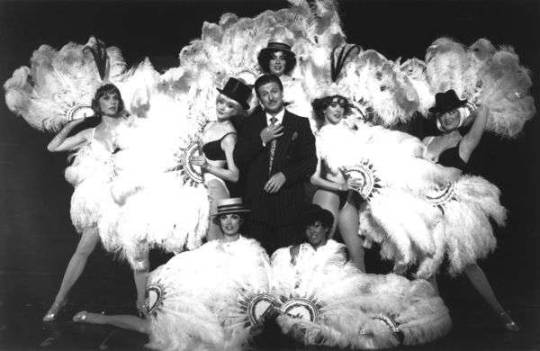
“Bob Fosse would love [this production],” it was commended at the time, “Especially the song-and-dance performance of Bebe Neuwirth who knocks everyone’s socks off.” High praise.
Bebe was also singled out for her “unending energy”, but Juliet too received praise in being “sultry and funny”. Together, the pair were called “separate but equal knockouts” and an “excellent combination”.
Juliet was 56 at the time, and sadly died just four years later. Just one year after the production though, Juliet was recorded as saying, “In fact, we’re thinking of doing it next year and taking it out on the road.”
Evidently that plan never materialised. But it is interesting to note the varied and many comments that were made as to the possibility of the show having a further life.
Bebe at the time had no recollection that the show might be taken further, saying “I didn’t know anything about that.” Ann Reinking years later would remark “no one seemed to think that the time was necessarily ripe for a full-blown Broadway revival.” While the aforementioned LA Times review stated in 1992 there were “unfortunately, no current plans” for movement, it also expressed desire and a call to action for such an event. “Someone out there with taste, money and shrewdness should grab it.”
The expression that a show SHOULD move to Broadway is by no means an indication that a show WILL move. But this review clearly was of enough significance for it to be remembered and referenced by name by someone who was there when it came out at the time, Caitlin Carter, nearly 30 years later. Caitlin was one of the six Merry Murderesses, principally playing Mona (or Lipschitz), at each of this run, Encores!, and on Broadway. She recalled, “Within two days, we got this rave review from the LA Times, saying ‘You need to take the show to Broadway now!’” The press and surrounding discussions clearly created an environment in which “there was a lot of good buzz”, enough for her to reason, “I feel like it planted seeds… People started to think ‘Oh we need to revive this show!’”
The seeds might have taken a few years to germinate, but they did indeed produce some very successful and beautiful flowers when they ultimately did.
In contrast with one of the main talking points of the ‘new Chicago’ being its long performance span, one of the first things I mentioned about this 1992 iteration was the rather short length of its run. It is stated that previews started on April 30th, for an opening on May 2nd, with the show disappearing in its final performance on May 17th. Less than a fleeting 3 weeks in total.
Caitlin Carter discussed the 1992 opening on Stars in the House recently. It’s a topic of note given that their opening night was pushed back from the intended date by two days, meaning Ann Reinking and Rob Marshall had already left and never even saw the production. “The night we were supposed to open in Long Beach was the Rodney King riots.”
Local newspapers at the time when covering the show referenced this large and significant event, by noting the additional two performances added in compensation “because of recent interruptions in area social life.”
It sounds rather quaint put like that. In comparison, the horror and violence of what was actually going on can be statistically summated as ultimately leaving 63 people dead, over 2300 injured, and more than 12,000 having been arrested, in light of the aftermath of the treatment faced by Rodney King. Or more explicitly, the use of excessive violence against a black man at police hands with videotaped footage.
A slightly later published review wrote of how this staging was thus “timely” – in reference to an observed state of “the nation’s moral collapse”.
‘Timeliness’ is a matter often referenced when discussing why the 1996 revival too was of such success. The connection is frequently made as to how this time, the revival resonated with public sentiment so strongly – far more than in 1975 when the original appeared – in part because of the “exploding headlines surrounding the OJ Simpson murder case”. The resulting legal and public furore around this trial directly correlates with the backbone and heart of the musical itself.
I'm writing this piece now at the time of the ongoing trial to determine the verdict of George Floyd’s murder, another black man suffering excessive and ultimately fatal violence at police hands with videotaped footage.
I think the point is that this is never untimely. And that the nation is seldom not in some form of ‘moral collapse’, or facing events that have ramifications to do with the legal system and are emotionally incendiary on a highly public level.
Which perhaps is why Chicago worked so well not just in 1996, but also right up to the present day.
Undoubtedly, we live in a climate where the impact of events is determined not just by the events themselves, but also the manner in which they are reported in the media. Events involving some turmoil and public outrage at the state and outcome of the legal system are not getting any fewer or further between. But the emphasis on the media in an increasingly and unceasingly digital age is certainty only growing.
#chicago#chicago the musical#chicago musical#bebe neuwirth#juliet prowse#ann reinking#bob fosse#fosse#dance#broadway#musicals#theatre#theatre history#choreography#gwen verdon#chita rivera#long reads#writing#george floyd#rodney king#oj simpson#dancing#dancer#andrew lloyd webber#cats the musical#musical theatre
74 notes
·
View notes